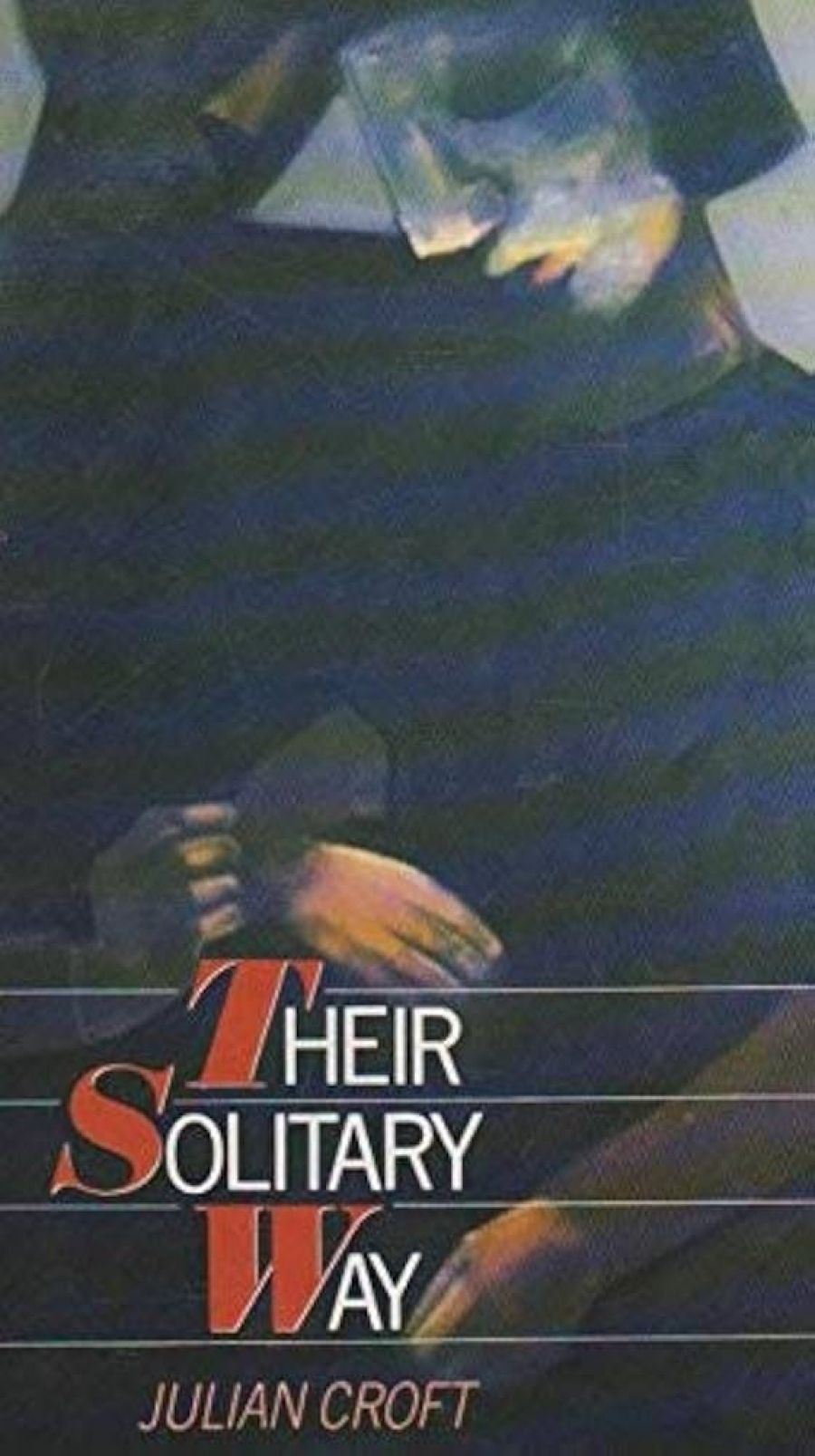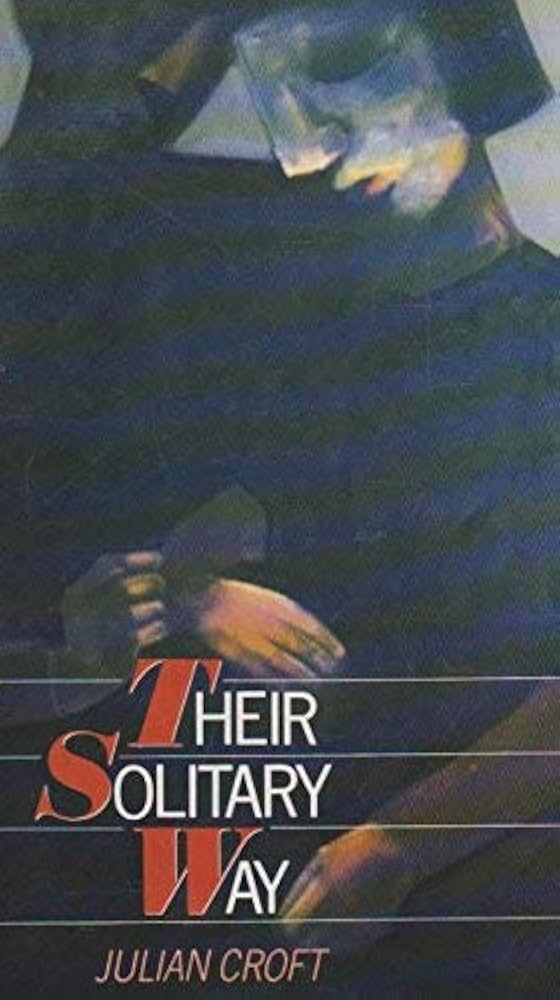
- Free Article: No
- Contents Category: Fiction
- Review Article: Yes
- Article Title: Reading the Signs: Defeated by symbols
- Online Only: No
- Custom Highlight Text:
This is a novel of dissociation. It is a novel laden with symbolism. It overworks at telling one so. ‘“It’s the nature of things,” he said, “to be symbolic. Perhaps that’s Nature itself.”’, The title, Their Solitary Way, indicates the state of the world and the way of the protagonists. In the novel, Julian Croft creates a sense of emotional lassitude. This doesn’t help the reader to like the characters. To meander through the soulless corridors of disenchanted lovers while the history of the world is caught in the corners of their consciousness, is to sympathize with Georg Lukacs and see that the middleclass Australian intellectual has it all out of proportion. In one sense this is what Croft’s novel is about. Bombs explode, people starve, revolution erupts but the Australian only feels pain when he inadvertently gets caught up in a demonstration. Croft is excellent on alienation.
- Book 1 Title: Their Solitary Way
- Book 1 Biblio: Angus & Robertson, $12.95 pb, 88 pp
- Book 1 Cover Small (400 x 600):

- Book 1 Cover (800 x 1200):

Sterility as a symbol for bourgeoise existence, without values, without commitment, without sympathy, without gesture, is all too common. Julian Croft has set it down once again. We have been expelled from ‘The Garden’ and are now in ‘The Garden of Illusion,’ in which mind is overactive and theory and useless bits of information grow luxuriantly. Croft, through his protagonist, Raymond, indicates the symbolic level of the novel and specifically the irony of the chapter title, ‘The Garden.’ ‘“Yes. And he planted them here to grow in his garden of Monplaisir. But the plants died – most of them.” He savoured the irony of the name and the expectations, while she turned away wide-eyed to look again at this false transported world Peter Pepper had made. That English nursery rhyme, the tongue twister she had learned in Appenzell Gymnasium when she was a schoolgirl, was real. Well, she thought, even the fabulous starts in the real world at a certain time and place.’ Croft gives us the real world of historical events as a fabulous backdrop for the real world of twisted egos.
Raymond and Inge remain hemispheres apart. She has a social conscience, of a limited kind. She wants to do the right thing and she wants to be liberated, free. The husband doesn’t understand and I’m not certain to what extent I’m convinced that Julian Croft does. But he sympathizes; he must. He tells it to us from her consciousness, her ‘I’. But he also tells it from the ‘I’ of the male; anima and animus. At the end we even have a male who’s not a male telling Raymond of his obsession with a woman who seems to be more interested in him now that he’s dressed in women’s clothing. For Raymond, all this is to make sense later. ‘I wanted to make love to you here, on top of Stevenson’s tomb, to a woman. But·I would have made love to a man who’s in love with a woman who almost fell in love with a woman who’s a man.’ Croft asserts there are only realities, death and birth. The tomb in our final home and the only way to cheat death, is not to love, but to procreate. It is a solitary way to go.
There is a surrealist quality within the work; a paradoxical situation of having historical events thrust upon the· personal and yet not feeling the weight of these events. I would like to think that Julian Croft is entirely in control of these contradictions. That the symbolic significance is operating and what I’m understanding is how the self overwhelms history. The blighted couple make their peregrinations and the chapter titles symbolically place the state of their relationship. The journey is cyclical: ‘The Garden,’ ‘The Harbour,’ ‘The Park,’ ‘The Forest,’ ‘Rivers and Bridges,’ ‘Islands,’ ‘Cities,’ ‘The Lake,’ ‘The Hill-Station,’ ‘The Earth,’ ‘The Mountain,’ ‘The Garden,’ ‘Postscript.’ We have come to our beginnings, but neither recognize, nor understand that the ideal does not exist. ‘The Postscript’ spells this out. The ending of the novel is a cop out. A letter, an epistle written by an Ocker reveals how it all ended. ‘Seeing that l’ m stuck here in a hotel room in Lisbon (a bad case of food poisoning after a pound of prawns and some flat beer yesterday) I thought I’d drop you a line … I asked him how he was, and his missus, you know the Swiss girl he brought back, and the kid. And he said the bitch’d gone to Belfast and taken the kid with her, and he hoped the Provos or the Third Force’ do something unspeakable to her ... You know they had a bit of trouble before they came back here. I don’t think she was too keen on the idea of Oz, and I don’t think the kid was her idea either.’ So endeth the lesson.
There is a kind of superficially Robbe-Grillet quality within the work. That is, the perceiving eye seeing and yet not seeing. Julian Croft sees a lot, knows too much about symbolism, is somewhat defensive about it. The novel attempts much and achieves a lot. But in the end I find the parallel set up between the human condition and personal condition too tenuous. Perhaps I should be warned by Inge. ‘“Goethe, Humboldt,” she went on, “looking around the world for signs. Can you see the wood for the trees…?”’


Comments powered by CComment